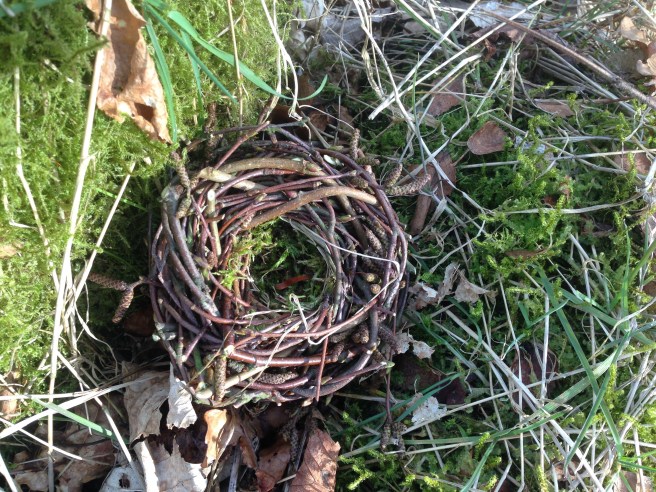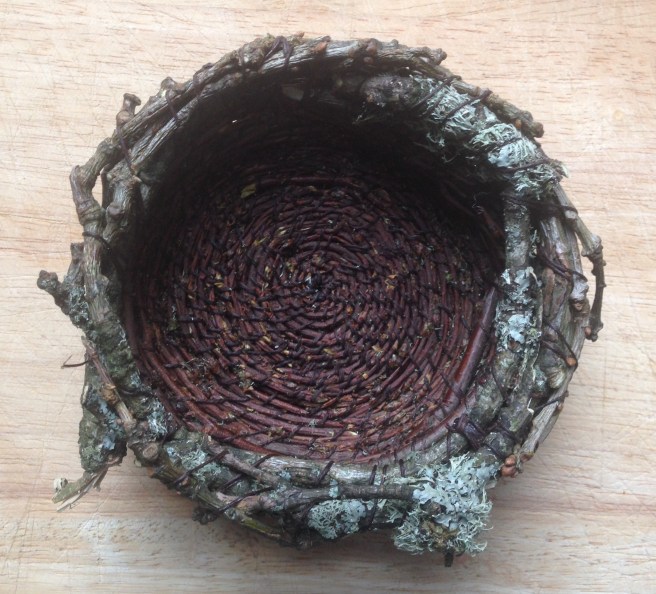
Time to start a new project. I’m taking part in North Fife Open Studios this year, doing a ‘mini-residency’ at the Centre for Stewardship Falkland over the weekend of 29th April to 1st May. I’ve decided to create a new piece of work for the event, a multiple, composed of stitched baskets and pods; two for each species of tree I find on Falkland Estate between now and the end of April.
I’ll name the work for the number of species I find. I’m hoping for more than ’28 Trees’. That’s the number I came up with while trying to get to sleep one night after Christmas. I started with native species – oak, birch, alder, elm – and worked my way through to the exotics: horse chestnut, Norway spruce, redwood, sycamore. Some of these are old favourites, for example the birches and willows, I love working with them. They are very flexible, have interesting bark colours and sweet scents. Some trees will be more challenging, like the horse chestnut with its sturdy branches and sticky leaf-buds.
I’ll post progress reports on this blog. There is a self-imposed set of rules: baskets/pods to be roughly similar size and shape, same black thread to be used throughout, one handful of twigs to be used for each tree species: one larger basket/pod to be made first, one small one to be made from the remaining twigs. More about the reasons for that in a later post.
First two completed last week: oak. I think this is English oak, Quercus robur. That would fit with it growing in a hedge round an arable field in lowland Fife. I’m happy to be corrected on any of these twig identifications though!







